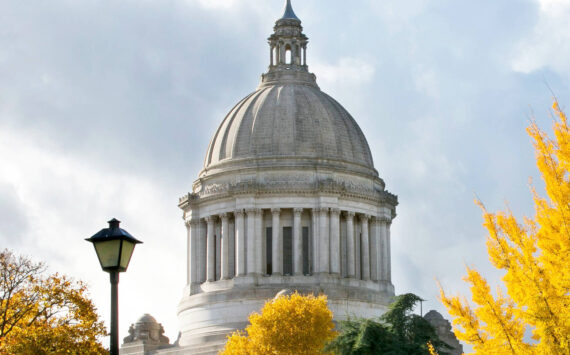Pierce County Executive John Ladenburg yesterday expressed full support for the Regional Transportation Investment District (RTID) plan submitted earlier this week by the bipartisan coalition of county council members, according to a statement released yesterday.
The news comes on the heels of an announcement Wednesday that a bipartisan coalition of councilmembers would present to the RTID Planning Committee today an amended plan for Pierce County’s portion of the Regional Transportation Investment District.
The new plan — created by Councilmembers Terry Lee, Calvin Goings, Roger Bush, and Barbara Gelman — calls for restoring the $155 million designated for State Route 704, better known as the cross-base highway, and adds an extra $5 million to the millions already earmarked for natural area enhancements.
Funding for the cross-base highway was recently removed from the RTID package after environmental groups argued construction of the highway would have a negative impact on natural area habitats. Pierce County Executive John Executive, a strong supporter of the highway, threatened to veto the plan.
The coalition’s plan also calls for an additional $135 million for SR 167. The extra money will add a southbound freeway off-ramp and second lane on SR 167 to Valley Avenue so commuters can go from Seattle to Puyallup on I-5 and SR 167 without driving on River Road or surface streets.
Finally, the amended plan designates $50 million for habitat improvements and non-motorized projects.
Yesterday, Ladenburg expressed support for the plan, commenting, “This package will provide the greatest benefit to all the citizens of Pierce County.It doesn’t leave a large segment of our population in east Pierce County stuck in traffic, spewing exhaust.”
Ladenburg was especially complimentary of the $50 million earmarked for natural areas and the development of bike paths and walking trails as part of the RTID project, as well as the $5 million for enhancements to the cross-base highway.
In addition to the enhancement projects contained in the RTID plan, Ladenburg announced several new projects, including:
1. General Obligation Bond to protect farmland and open space
Pierce County will propose a $125 million bond for voter approval in early 2008 for the purchase of development rights for farmland and open space preservation. The protection of farmland and open space prevents sprawl and helps to reduce future green house gas emissions associated with conversion of farmland and open space to residential uses.
2. Green energy programs to off-set carbon emissions from county operations
Pierce County will spend $85,000 to purchase green power credits to promote clean energy and off-set green house gas emissions associated with energy usage at county facilities. The purchase of green power credits helps to fund power generation from climate friendly sources, such as wind power, and helps to reduce future green house gas emissions.
3. Urban forestry program with goal of planting 25,000 trees over five year period
Pierce County will spend $200,000 to develop an urban forestry program that will improve overall tree cover by planting trees along county roadways, within county parks, and at other sites in the community. These trees will shade and beautify our county while fighting climate change by removing carbon from the atmosphere.
4. Purchase Trailgate facility and improve portions of existing undeveloped Orangegate Park site for equestrian use
Spend $4.4 million to purchase the Trailgate facility and improve the Orangegate Park site in order to help enhance opportunities for equestrian activities in Pierce County and could off-set any reduction in equestrian activities associated with the construction of the cross-base highway. Improvements to Orangegate Park will provide better public access while allowing a large area of forested open space to be protected for many generations to come.
“I challenge anyone to question my environmental record as county executive,” said Ladenburg. “My administration has been very successful at creating and preserving natural areas, building and improving parks, protecting our water quality, restoring wildlife and salmon habitat, cleaning up illegal dumpsites, and developing recreational opportunities for our children and grandchildren.”




